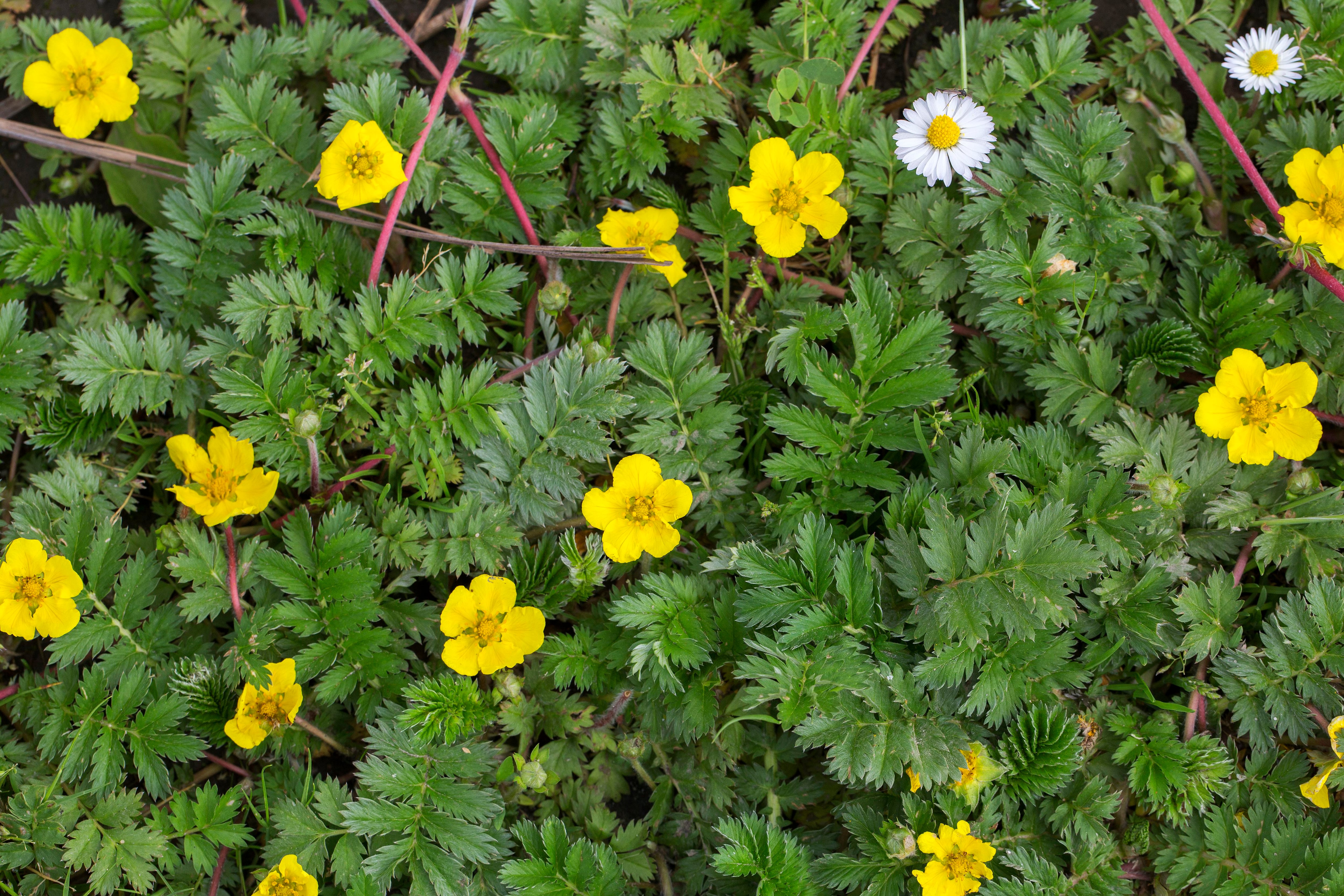
The petals of the flowers have various substances that create a “bull's-eye” effect that guides insects in their search for pollen. This was explained by the study led by Matthew H. Koski, assistant professor of biological sciences at the Faculty of Science at Clemson University. The research sheds light on chemical modifications in flowers that respond to environmental reasons, including climate change, that could threaten their survival.
The research team studied Argentina Anserina, a plant with a bright yellow flower, also known as silver grass, belonging to the Rosaceae family. The researchers sought to learn how pigments in the petals, visible only in the ultraviolet spectrum, play an integral role in the plasticity of the plant, that is, its ability to respond quickly to a changing environment. The study, published in the journal Evolution, also included researchers Clemson Lindsay M. Finnell, Elizabeth Leonard and Nishanth Tharayil.
On the one hand, they studied the growth of Silver grass at different elevations in southwestern Colorado, United States, to better understand the functions of the various UV-absorbing chemicals in plant petals and how these chemicals work to aid in pollination and, therefore, reproduction. Professor Koski explained that “although humans cannot see UV patterns on flower petals, many of its pollinators can.”

“I have always been fascinated by how flower color variation arises and how it evolves, and what factors drive the evolution of that variation,” Koski said, “so I was interested in thinking about how we perceive color compared to how organisms that interact more frequently with flowers do.”
Pollinating insects, for example , see in the ultraviolet spectrum, so flowers that reflect or absorb ultraviolet wavelengths give, to pollinators, the perception of different colors that humans cannot see. Koski said he is fascinated by “discovering what these UV signals could be doing functionally with regard to pollination.”
In addition, he said that a wide range of plants have concentrations of UV-absorbing chemicals at the base of flower petals, while the tips of the petals have more chemicals that reflect UV rays. This creates an overall “bull's-eye” effect that guides insects in their search for pollen.
The team wanted to delve into how plants adapt to survive in different environments. That's why, at an altitude of 1,000 meters, they discovered that flowers adapt to their environment by producing different amounts of chemicals that block or absorb UV rays.

“At higher elevations, there are always more UV-absorbing compounds or a larger spatial area of UV absorption in the petals, compared to low-elevation populations,” he said. So, the researchers said that this demonstrates the plasticity of the plant, which Koski defined as different traits in the same organisms under different environmental conditions. This is a critical step in understanding how organisms adapt to survive change.
For Koski, the important thing about plasticity is that, “when we think about climate change and global change, plasticity is a mechanism by which natural populations can respond very quickly to climate change and persist in those climates.”
On the other hand, although it is considered that the process of evolution, which results in changes in the genetic code over time, progresses more slowly, responding “plastically to environmental change,” he said.
“The research raised the question of whether plastic responses to environmental situations are adaptive,” said the professor, responding that “the study found that the plastic change in UV pigmentation benefited the plant, especially those at high altitudes, because the increased ultraviolet absorption in the petals resulted in greater pollen viability.”

The research will help scientists better understand how organisms respond to environmental changes and even predict whether and how well some organisms could survive rapid environmental change, such as global climate change.
It would also be important for agriculture, because some of the same UV-sensitive pigments that work in silvergrass are also present in cash crops such as mustard and sunflowers. “It's interesting to think about whether abiotic factors such as UV rays or temperature are changing the expression of these traits, how that will affect the way pollinators see flowers, and how it will do so in terms of crop yield and seed production,” Koski said.
The team's research might even be important for home gardeners trying to attract specific types of pollinators to their plants. “I think one thing people think about is planting a variety of flowers with different colors and morphologies to attract many different types of pollinators, such as a pollinator-friendly garden,” Koski said.
He concluded that “something to think about is that we often don't know all the details of what colors pollinators perceive and how that might change with the seasons. Just because things may seem very similar to us, doesn't mean they can't be very diverse for pollinators, and they might also attract a different set of the pollinators we expect.”
KEEP READING:
Últimas Noticias
Debanhi Escobar: they secured the motel where she was found lifeless in a cistern
Members of the Specialized Prosecutor's Office in Nuevo León secured the Nueva Castilla Motel as part of the investigations into the case

The oldest person in the world died at the age of 119
Kane Tanaka lived in Japan. She was born six months earlier than George Orwell, the same year that the Wright brothers first flew, and Marie Curie became the first woman to win a Nobel Prize

Macabre find in CDMX: they left a body bagged and tied in a taxi
The body was left in the back seats of the car. It was covered with black bags and tied with industrial tape
The eagles of America will face Manchester City in a duel of legends. Here are the details
The top Mexican football champion will play a match with Pep Guardiola's squad in the Lone Star Cup

Why is it good to bring dogs out to know the world when they are puppies
A so-called protection against the spread of diseases threatens the integral development of dogs




